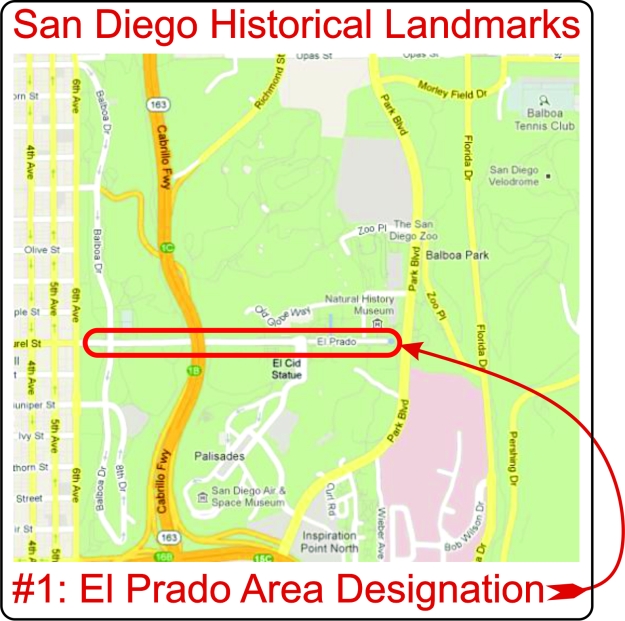For the introductory blog post to San Diego’s historical landmarks, click on San Diego’s Historical Landmarks.
#1: El Prado Area Designation, part 1
#1: El Prado Area Designation, part 2
#1: El Prado Area Designation, part 3
#1: El Prado Area Designation, part 4
#1: El Prado Area Designation, part 5
#1: El Prado Area Designation, part 6
#1: El Prado Area Designation, part 7
#1: El Prado Area Designation, part 8
#1: El Prado Area Designation, part 9
#1: El Prado Area Designation, part 10
#1: El Prado Area Designation, part 11
#1: El Prado Area Designation, part 12
#1: El Prado Area Designation, part 13
#1: El Prado Area Designation, part 14
#1: El Prado Area Designation, part 15
#1: El Prado Area Designation, part 16
#1: El Prado Area Designation, part 17
This is it, Folks! Our last stop on the El Prado Designation Area, and it’s a beautiful one, too. Looks like this:
 Bea Evenson Fountain & Reuben H. Fleet Science Center
Bea Evenson Fountain & Reuben H. Fleet Science Center
in San Diego’s Balboa Park
![]()
That’s the Bea Evenson Fountain. It sits in the plaza between the Reuben H. Fleet Science Center in the picture (also see part 17) and the San Diego Natural History Museum (see part 16).
If you’re like me, you are wondering why Bea Evenson gets a beautiful fountain. Well….
 Bea Evenson Fountain and Natural History Museum
Bea Evenson Fountain and Natural History Museum
in San Diego’s Balboa Park.
![]()
Bea Evenson is the person pretty much directly responsible for us having most of the beautiful buildings along El Prado. History reports that many of the buildings were built as temporary structures for the 1915 Panama-California Exhibition. They were to be torn down after the Exhibition, but the citizenry took a liking to them and they were allowed to stand.
By the 1960s, however, the temporary structures were in a state of serious disrepair and certainly would not be able to withstand a significant earthquake. They were scheduled to be demolished in the mid-1960s.
![]()
Bea Evenson refused to sit idly by while the beautiful buildings were destroyed. She created a Committee of 100 to work at saving the buildings, hoping to get 100 people working to help preserve the buildings. Instead, of 1,000 people stepped up to the plate.
A bond measure was passed by the voters, and funds were raised to renovate the buildings, retaining the exterior designs but incorporating a more practical interior. Plastic molds were made of all the bas-relief sculptures so that the new façade would be identical to the old. Some of the original sculptures are on display in various areas of Balboa Park.
Without Bea Evanson, the El Prado Designation Area would be without many of the buildings that we have visited on our trek down El Prado.
So here’s to Bea Evanson, the Committee of 100, and all the Bea Evansons of the world who refuse to let history be destroyed.
![]()
Need a unique gift?
Visit Photographic Art by Russel Ray Photos at Fine Art America.







These are great pics Russel and what beautiful fountains. It’s good to know that there are always people who’ll stand up and get something done too.
LikeLike
Yay for Bea!
LikeLike
Beautiful pics. I may get out to SD next year. I’ve been here once for a short visit. I think I’ll head back. Hopefully I will have more time.
LikeLike
Let me know when you get here. I often have free or discounted tickets to the Zoo, Safari Park, and SeaWorld.
LikeLike